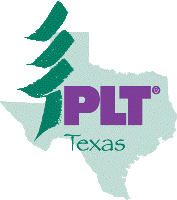Project Learning Tree offers another set of curriculum resources in developing your Tree Trail. We have suggested PLT activities to use for each Tree Trails Lesson Module. If you have additional suggestions, please email those to us.
If you are not already PLT certified, please visit the Texas PLT website for upcoming workshops.
Download the Project Learning Tree Correlations (PDF, 172 KB)
One: Map a Tree Trail
By understanding maps, students get a sense of where they are in relation to their home, school and neighborhood. Trees are often important landmarks along the way.
Goal: Students will select a minimum of three trees for the Tree Trail.
PLT Connection: 21 Adopt a Tree
Two: Tree Identification
Tree identification is a critical first step towards an understanding of ‘diversity.’ By learning the names of trees, we come to appreciate them.
Goal: Students will identify their trail trees and explain how identification relates to tree knowledge.
PLT Connection: 5 Poet-Tree, 64 Looking at Leaves, 68 Name that Tree
Three: Tree Measurement
Tree measurement is fundamental to the practice of forestry. Foresters count trees and measure trees. With just a few basic measurements, we can assign values to trees and compare them to each other.
Goal: Students will measure trees and explain how measurement is used to place value on trees and forests.
PLT Connection: 67 How Big Is Your Tree?
Four: Tree Structure and Function
Trees are living organisms with many specialized structures – leaves, roots, wood, and the living cells that connect them. Understanding how trees are constructed and grow is essential to care for trees and calculate the benefits that trees provide.
Goal: Students will explain the structure and function of tree parts.
PLT Connection: 63 Tree Factory, 76 Tree Cookies, 79 Tree Lifecycle
Five: Benefits and Values of Trees
Advances in the science of urban forestry allow us to assign monetary values to a wide range of benefits that trees in urban areas provide. As trees grow, these values rise – the only part of the built environment of our cities that does so!
Goal: Students will determine the benefits of trees and calculate their value.
PLT Connection: 13 We All Need Trees, 30 Three Cheers for Trees!, 32 A Forest of Many Uses
Six: Diversity of Species and Ecosystems
Promoting ‘diversity’ is a basic principle of urban forestry. A diverse forest implies a more resilient forest, since disease or insect outbreaks likely won’t affect every tree all at once.
Goal: Students will evaluate how the diversity of species affects the ecosystem.
PLT Connection: 10 Charting Diversity
Seven: Tree and Forest Health
History has shown us the risk of planting too many of the same species in the urban forest. Cities and forests have lost many millions of trees to foreign or species-specific diseases and insect pests. Exotic tree species can sometimes invade our forest landscapes and crowd out native species.
Goal: Students will demonstrate ways to keep trees and forests healthy.
PLT Connection: 12 Invasive Species
Eight: Tree History
Trees fascinate us because the oldest among them span many human generations. Trees can be a living link to our past, or may be planted by the current generation as memorials to important events or people in the community.
Goal: Students will research the history of a tree(s) and make connections to the past.
PLT Connection: 95 Did You Notice?
Nine: Urban Forestry
The trees around us – those that make up the ‘urban forest’ – are a reflection of the community itself. Cities often organize the protection, planting and care of trees in public spaces, through a Tree Board or other volunteer group. Tree City USA is one symbol of a community that cares about its trees.
Goal: Students will create a Campus Tree Trail Care Plan.
PLT Connection: 54 I’d Like to Visit a Place Where…, 74 People, Places, Things
Ten: Student Service Leader
Arbor Day is the celebration of trees where we live, work, learn and play. Communities set aside one day each year to plant and care for trees, usually on public property, such as a school or park. Students can provide the leadership for a project to plant or care for trees – either on school grounds or in the surrounding community.
Goal: Students will design and conduct a service learning project.
PLT Connection: 31 Plant a Tree, 34 Who Works in this Forest?, 60 Publicize It!, 96 Improve Your Place